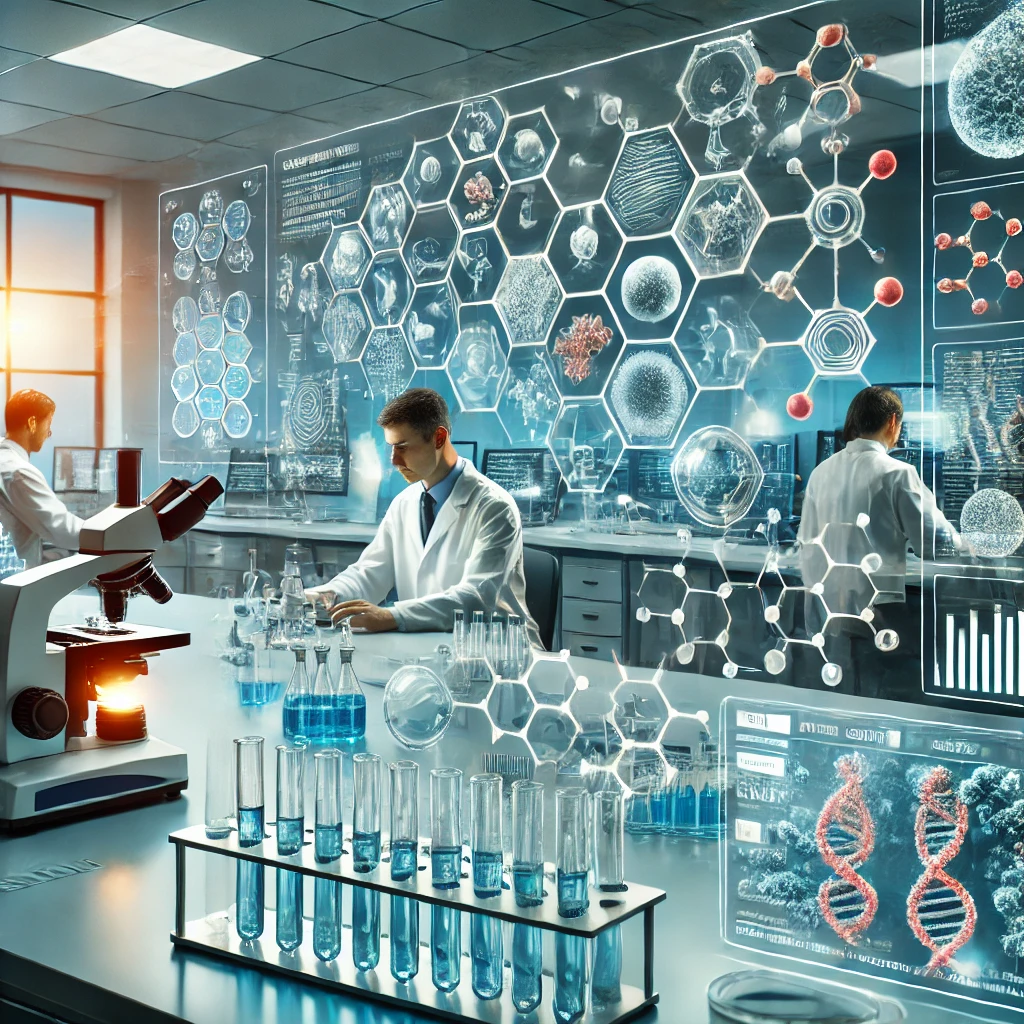
BPC-157: A Fascinating Peptide for Healing the Body
As many of my readers know, I typically focus on natural remedies and holistic health solutions. However, BPC-157 has caught my attention due to its potential benefits in healing and tissue repair. Although it’s synthetically produced, I find this peptide intriguing and believe it’s worth exploring. In this post, I’ll explain what BPC-157 is, how it works, the potential advantages and disadvantages, and the research surrounding it. Let’s dive into this fascinating topic.
What is BPC-157?
Before diving into BPC-157, let’s first discuss what a peptide is.
Peptides are short chains of amino acids, which are the building blocks of proteins. Think of amino acids as tiny Lego pieces. When you connect a few of them, you get a peptide, and if you connect a lot more of them, you get a protein. Peptides are crucial because they help your body perform many functions, from building muscle to healing wounds. Your body naturally makes many different peptides, but sometimes researchers create synthetic (lab-made) peptides to mimic or enhance the body’s natural processes.
Now, BPC-157 is a synthetic peptide, meaning it’s made in a lab, but it’s based on a naturally occurring protein in the stomach called Body Protection Compound (BPC). This protein is thought to help protect and repair the tissues in your stomach and intestines. BPC-157 is a smaller version of this protein and has been studied for its healing properties, particularly for muscles, tendons, and the digestive system.
How Does BPC-157 Work?
BPC-157 works by promoting angiogenesis, which is the process of forming new blood vessels. This increases blood flow to injured areas, helping them heal faster. It also seems to reduce inflammation and protect cells from damage. In simple terms, it helps the body repair itself more efficiently when tissues are injured or inflamed.
Benefits of BPC-157
Studies have found several potential benefits of BPC-157. Here’s a breakdown:
1. Healing the Gastrointestinal Tract
- Healing Stomach Ulcers: BPC-157 has been shown in animal studies to help heal ulcers in the stomach. It can also reduce inflammation in the intestines, which may help with conditions like colitis.
- Protecting Against NSAID Damage: NSAIDs (like ibuprofen) can damage the stomach lining if used for a long time. Some studies show that BPC-157 can protect against this damage and help the stomach heal.
2. Tissue Repair and Wound Healing
- Muscle and Tendon Injuries: If you’re an athlete or someone who’s active, you’ll appreciate this. BPC-157 has been found to speed up healing in muscles, tendons, and ligaments. This makes it particularly interesting for people recovering from injuries or surgery.
- Bone and Joint Health: Early research suggests that BPC-157 may also help with bone healing, potentially benefiting people with fractures or joint problems.
3. Anti-Inflammatory Effects
- Reducing Inflammation: BPC-157 has shown anti-inflammatory effects, which can help reduce pain and speed up recovery for those dealing with chronic inflammatory conditions like arthritis.
4. Neuroprotective Potential
- Brain Health: Some early studies indicate that BPC-157 may protect brain cells after a stroke or injury, helping to minimize damage. This is an area of ongoing research, and while results are promising, it’s still early days.
5. Cardiovascular and Organ Protection
- Protecting Blood Vessels: BPC-157 might also support heart health by helping blood vessels repair themselves, which could improve overall cardiovascular health.
- Liver and Organ Health: There’s some evidence suggesting that BPC-157 could protect organs like the liver from damage, making it a potentially broad-spectrum healing agent.
Disadvantages and Limitations

As with any supplement or treatment, there are potential downsides and limitations to consider:
1. Lack of Large-Scale Human Studies
- Most of the research on BPC-157 has been conducted on animals. While the results are promising, there aren’t enough large-scale studies on humans to confirm the same benefits. This means that while BPC-157 looks exciting, we still need more solid evidence for its effectiveness in people.
2. It’s Synthetic
- BPC-157 is not something you can get from food or plants—it’s synthetically made in a lab. For those who prefer only natural remedies, this could be seen as a drawback.
3. Limited Long-Term Safety Data
- There’s very little information about the long-term effects of using BPC-157. We don’t know if using it for months or years could lead to any side effects, so caution is advised.
4. Potential Side Effects
- Some users have reported minor side effects like nausea, headaches, or fatigue. Because human studies are limited, it’s unclear how common these effects are or whether they’re directly related to BPC-157.
Research and Studies on BPC-157
Here are some of the key studies that have explored BPC-157:
1. Gastrointestinal Healing
- A study published in Journal of Physiology Paris found that BPC-157 could speed up the healing of stomach ulcers and reduce inflammation in the intestines of rats. It also protected the gut from damage caused by NSAIDs. Link to study.
2. Tendon and Muscle Repair
- Another study showed that BPC-157 helped heal Achilles tendon injuries in rats. It improved tissue regeneration and reduced inflammation in the injured area. This has made BPC-157 popular among athletes recovering from injuries. Link to study.
3. Neuroprotective Effects
- Early research on BPC-157’s ability to protect the brain after injury or stroke is promising. In rats, BPC-157 reduced the extent of brain damage and improved recovery. More research is needed in humans, but this could have exciting implications for stroke and trauma patients. Link to study.
Should You Consider BPC-157?
BPC-157 shows significant promise, especially for those dealing with injuries, inflammation, or digestive issues. However, given the limited human research and long-term safety data, it’s important to approach it cautiously.
Discover more from
Subscribe to get the latest posts sent to your email.
